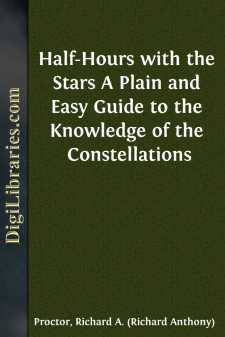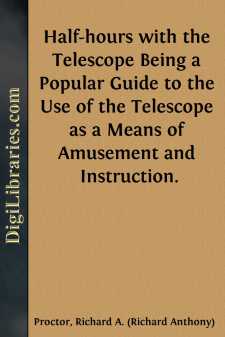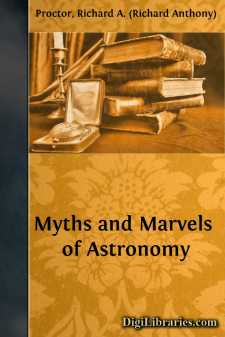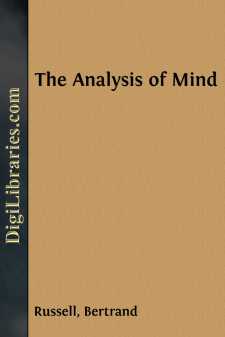Categories
- Antiques & Collectibles 13
- Architecture 36
- Art 48
- Bibles 22
- Biography & Autobiography 813
- Body, Mind & Spirit 142
- Business & Economics 28
- Children's Books 15
- Children's Fiction 12
- Computers 4
- Cooking 94
- Crafts & Hobbies 4
- Drama 346
- Education 46
- Family & Relationships 57
- Fiction 11829
- Games 19
- Gardening 17
- Health & Fitness 34
- History 1377
- House & Home 1
- Humor 147
- Juvenile Fiction 1873
- Juvenile Nonfiction 202
- Language Arts & Disciplines 88
- Law 16
- Literary Collections 686
- Literary Criticism 179
- Mathematics 13
- Medical 41
- Music 40
- Nature 179
- Non-Classifiable 1768
- Performing Arts 7
- Periodicals 1453
- Philosophy 64
- Photography 2
- Poetry 896
- Political Science 203
- Psychology 42
- Reference 154
- Religion 513
- Science 126
- Self-Help 84
- Social Science 81
- Sports & Recreation 34
- Study Aids 3
- Technology & Engineering 59
- Transportation 23
- Travel 463
- True Crime 29
Half-Hours with the Stars A Plain and Easy Guide to the Knowledge of the Constellations
Description:
Excerpt
It is very easy to gain a knowledge of the stars, if the learner sets to work in the proper manner. But he commonly meets with a difficulty at the outset of his task. He provides himself with a set of the ordinary star-maps, and then finds himself at a loss how to make use of them. Such maps tell him nothing of the position of the constellations on the sky. If he happen to recognize a constellation, then indeed his maps, if properly constructed, will tell him the names of the stars forming the constellation, and also he may be able to recognize a few of the neighboring constellations. But when he has done this he may meet with a new difficulty, even as respects this very constellation. For if he look for it again some months later, he will neither find it in its former place nor will it present the same aspect,—if indeed it happen to be above the horizon at all.
It is clear, then, that what the learner wants is a set of maps specially constructed to show him in what part of the sky the constellations are to be looked for. He ought on any night of the year to be able to turn at once to the proper map, and in that map he ought to see at once what to look for, toward what point of the compass each visible constellation lies, and how high it is above the horizon. And, if possible (as the present work shows is the case), one map ought to suffice to exhibit the aspect of the whole heavens, in order that the beginner may not be confused by turning from map to map, and trying to find out how each fits in with the others.
It is to fulfil these requirements that the present maps have been constructed. Each exhibits the aspect of the whole sky at a given day and hour. The circumference of the map represents the natural horizon, the middle of the map representing the part of the sky which lies immediately overhead. If the learner hold one of these maps over his head, so as to look vertically upwards at it, the different parts of the horizon marked in round the circumference being turned towards the proper compass points, he will see the same view of the heavens as he would if he were to lie on his back and look upwards at the sky, only that the map is a planisphere and the sky a hemisphere.
But although this illustration serves to indicate the nature of the maps, the actual mode of using them is more convenient.
Let it first be noted that properly speaking the maps have neither top, bottom, nor sides. Each map may be held with any part of the circumference downward: then the centre of the map is to be looked upon as the top for that part of the circumference. The portion of the map lying beneath the centre represents the portion of the sky lying between the point overhead and a certain part of the horizon—the part in fact corresponding to the particular part of the circumference which is turned downwards. Thus if on any night we wish to learn what are the stars towards the north, we look for the map corresponding to that night. At the hour named the stars toward the north will be those shown between the centre of the map and the top; and, of course, Page 2 we hold the map upside down so as to bring the centre above the northern part of the circumference.
But this matter will be more clearly understood by comparing the account of any of the accompanying maps with the map itself.
Again, it must be noted that, although the maps are necessarily arranged in a certain order, there is in reality no first or last in the series. The map numbered I. follows the map numbered XII. in exactly the same manner that the latter follows the map numbered XI. The maps form a circular series, in fact.
The only reason for numbering the maps as at present, is that the map numbered I. Happens to exhibit the aspect of the sky at a convenient hour on the night of January 1st. It will be found that the dates follow on with intervals of seven or eight days right round the year, the end of the year falling in the left-hand column of the table under Map I., while the beginning of the year is in the right-hand column of the same map.[*]
[Footnote *: It may be mentioned in passing, that the dates have not been thrown in so as to fall regularly round the year, but correspond with the variations due to the earth's variable motion round the sun.]
It will be seen at once that a map can always be found corresponding to a convenient hour on any night of the year....














